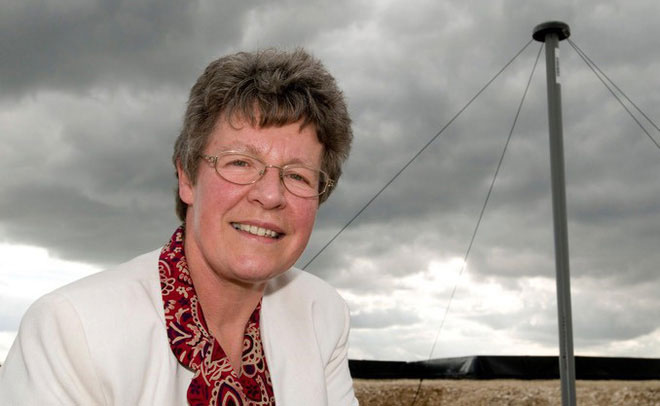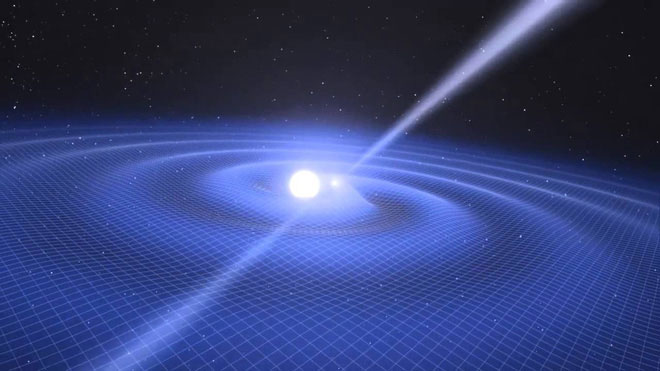The woman received a reward for discovering the hidden planet, but another received the NOBEL award for her discovery
She was not sad because when she did not receive the prestigious Nobel Prize, she had other interesting thoughts!
In 1965, two years after Jocelyn Bell Burnell arrived at Cambridge University to begin a doctoral program, she discovered the first star pulsar . For unknown readers: after pulsar - pulsars are very fast rotating objects, with orbits around a neutron star with enormous gravity. This very discovery brought about a Nobel Prize for . who supervised the doctoral process of Mrs. Burnell. The prize was awarded in 1974.

Mrs. Jocelyn Bell Burnell - who discovered the hidden planet.
When Bell Burnell began her studies and research career, she thought that she was not qualified to attend Cambridge, even being bitten by male students in the same physical class. Four decades after her scientific discovery, she finally received worthy praise: on Tuesday, she took home $ 3 million in bonuses for Special Breakthroughs in Physics. Basically , the prestigious award is for the eminent figures of the scientific community, the outstanding individuals can be mentioned.
In 1967, she told the guardian of her doctoral studies, Antony Hewish , of "unusual, indeterminate currents" in the radio signals he was studying and analyzing. They call it LGM-1, which stands for "Little Green Men - Blue Little Man" . The name makes everyone imagine the aliens immediately.
She discovered how pulsars were made with radio systems she had assembled with Antony Hewish, based on astronomer Martin Ryle's design.

Metaphors are very fast rotating objects, with orbits around a neutron star with enormous gravity.
"Analyzing data in other regions, I found two more mysterious signals, " she told The Guardian in 2008. " I have discovered four other examples of a completely new kind of star - astronomical objects emit signals when they rotate, their signals sweep through the universe like a lighthouse lamp, and we call it pulsar . Currently, there have been projects to use pulsars to make navigational signs when traveling in space.
Jocelyn Bell Burnell's discovery was named "one of the most surprising things in the history of astronomy" , the Breakthrough Award said that Tuesday. "Among many other research results, it should be emphasized that it has brought about a kind of Einstein test, which provides a treasure trove of new knowledge about how to form heavy elements in the universe."
But in the past, when the press knew about the planet, people honored Mr. Antony Hewish for his work to discover the new celestial celestial body. Mr. Antony Hewish became one of the first two astronomers to win the Nobel Prize in Physics, alongside astronomer Martin Ryle. But Mrs. Bell Burnell is not upset because she does not have the most prestigious award in science.

Mr. Antony Hewish (left).
Ms. Burnell, now an astronomy professor at Oxford University, has also received an award worthy of what she has devoted. She said she would use $ 3 million in bonuses to create scholarships to encourage students in difficult-to-study physics disciplines.
She said: "I realized that if you get a Nobel prize, you won't have anything else - some people feel the trade-off is reasonable, but they may be wrong. But if they do NOT win the prize. Nobel, it seems like you will win all sorts of other prizes, frankly I am much happier! Every year I receive a prize and a feast of honor ".
- Interesting numbers of the Nobel Prize
- Nobel prizes were 'mistakenly given' in history
- Woman selling vegetables receiving 'Asian Nobel'
- The process of awarding Nobel prizes is gradually outdated?
- 7 scientists received the
- Vietnamese woman who won two Nobel Prizes
- 2010 Nobel Prize ceremony
- 5 special theories received the Nobel Prize in Economics
- The 2014 Nobel season begins on October 6
- The fifth couple won the prestigious Nobel Prize
- The 2017 Nobel Prize for Literature will announce the winner on October 5
- Ig Nobel 2013: Applause is breaking the law to win peace
 The most famous scientific failures in history
The most famous scientific failures in history Mysterious genius mechanic and the machine froze time
Mysterious genius mechanic and the machine froze time The son carries the 'bad gene' of genius Albert Einstein
The son carries the 'bad gene' of genius Albert Einstein Isaac Newton
Isaac Newton